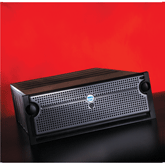To keep up with the ballooning need for data storage, agencies are increasingly looking to storage arrays.'Over the last eight years, the average annual growth rate of information stored on disk arrays exceeded 60 percent,' said Tom Joyce, vice president of storage platforms marketing for EMC Corp. of Hopkinton, Mass. 'This year we project the growth will exceed 70 percent.'But it is not just the data growth that is driving array adoption. As the technology matures, prices have dropped, making storage arrays affordable for even small agencies or branch offices that have needs bigger than their budgets.'With more and more high-end storage-array capabilities now being offered by midrange storage systems, there is an emerging trend of enterprise applications ... being well served by midrange enterprise storage systems,' said Chris Bennett, senior director of products at Network Appliance Inc. of Sunnyvale, Calif.Sales of external disk drives are accelerating to meet the growing demand for storage, according to International Data Corp. of Framingham, Mass.Although the price per gigabyte continues to drop, both capacity and the dollar value of external disk storage systems rose last year. IDC's figures for the fourth quarter of 2005 show that vendors shipped 653 petabytes of disk storage, an increase of 55 percent over the previous year, and revenues grew 13 percent to $6.8 billion.Nearly all that growth came from external disk storage, which grew at an 18 percent rate to $4.7 billion. Worldwide disk sales figures for the entire year showed an 11 percent increase to $23.7 billion.While Hewlett-Packard Co. and IBM Corp. lead the total disk sales'since they also sell internal storage on their servers, PCs, workstations and notebook PCs'EMC is No. 1 in the external storage category.HP and IBM continue to hold the second- and third-place spots, respectively, in external storage, but Dell Inc. is gathering steam, posting a 54 percent growth rate this year, enough to surpass Hitachi Data Systems Corp. of Santa Clara, Calif., and take over third place.Dell continues to offer low-end storage area network hardware, co-branded with EMC. But in terms of its own PowerVault storage arrays, Dell is not directly competing with the others in terms of offering full-featured, high-end storage.'We characterize [PowerVault] as a disk storage enclosure: It connects to a host-based RAID controller located inside a server,' said Dell spokeswoman Bridget Braxton.Other companies are taking the opposite approach, going for services rather than commodity pricing.'Nobody is going to be a performance leader forever, and hardware is not a differentiator anymore,' said Mike Karp, senior analyst at Enterprise Management Associates of Boulder, Colo. 'EMC and Network Appliance are going into professional services to differentiate themselves.'As disk prices have continued to drop, more organizations are turning to nearline disk backups instead of tape. While tape is still used for off-site archiving, mirroring data to low-cost, high-capacity disks allows much faster recovery than trying to restore data from a tape. Three factors are contributing to this:Bigger, faster and cheaper drives. Drive capacity keeps getting larger, with 300GB drives now commonplace, and that trend will continue. Last year, for example, Seagate Technology LLC of Scotts Valley, Calif., started shipping drives that use perpendicular, rather than longitudinal, recording.[IMGCAP(2)]This new technology can store five times as much data on the same-sized disk, while also providing faster recording and higher data throughput.Better drive connections. Serial Advanced Technology Attachment and Serial Attached SCSI drive connection technologies provide higher data transfer rates, lower component costs and more flexible architectures. While these technologies are compatible, Karp cautioned against mixing different drives in the same enclosure.'Only put drives of the same speed in the same bay,' he said. 'Devices spinning at different speeds causes vibration, and there is a danger that drives can unset or cause errors in reads and writes.'Lower cost, faster networking. Fibre Channel has been the choice for high-speed storage networks, with 4GB data rates now available. The downside has been the high cost and special skill set needed to deploy and support FC.Recently, FC prices have dropped: The new Internet Small Computer System Interface lets organizations create IP SANs'storage networks based on Ethernet connections and IP'at a fraction of the cost of FC.'iSCSI and FC have very close performance levels now,' Karp said. 'If you are just getting into SANs and don't want the heartbreak of learning FC, iSCSI is a neat way to use existing infrastructure and doesn't require a whole lot of new knowledge.'There used to be hard lines dividing different levels of storage technology. As the market continues to develop, those lines are starting to blur.'The disk array market is converging into a single entity,' said Claus Mikkelsen, chief scientist at Hitachi Data Systems Corp. 'Enterprise and modular used to be defined as Fortune 1000 and midrange, respectively. Now each group will have a mix of both classes of storage to match their application-specific needs and help them efficiently manage their storage resources.'SANs, for example, used to be limited to high-end deployments, but lower FC prices and the rise of iSCSI have brought them within range of much organizations.[IMGCAP(3)]'We see relentless growth of data replication through disk-to-disk backup solutions, and iSCSI growth continuing to accelerate as an alternative to traditional storage solutions,' Bennett said.As these trends continue, simply being able to afford enough disk space is becoming less of an issue. Now organizations can focus on the higher-level features such as service, reliability and manageability.'There are less and less differentiators in terms of technology,' Karp said. 'The local service guy who is much better than the competition could be a big differentiator.'
MULTIPLE CHOICE: Dell offers storage arrays with capacities ranging from 12 disks to 240.
OPTIONS: Storage arrays on the market include IBM's TotalStorage.
Network Appliance's FAS series









